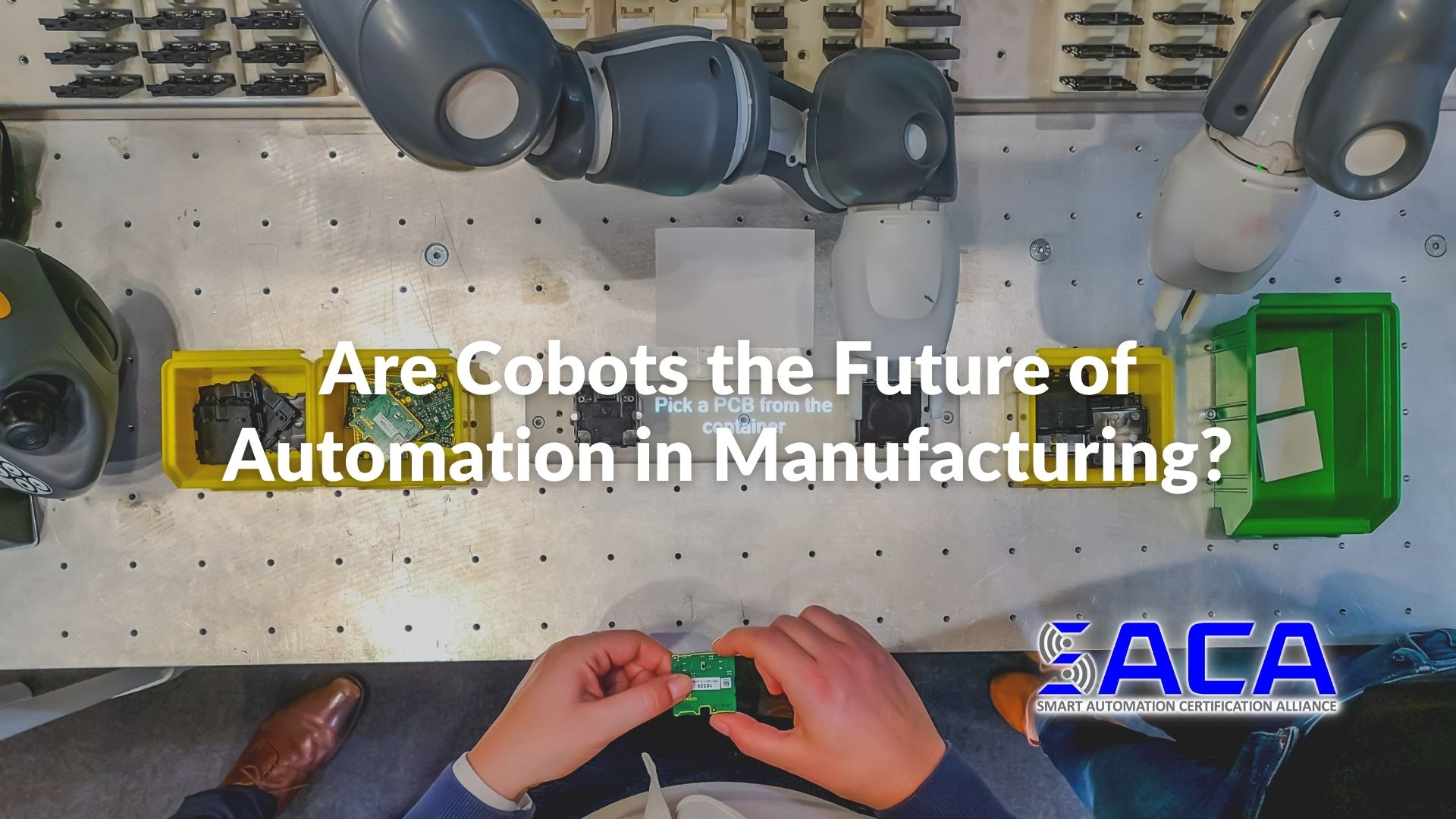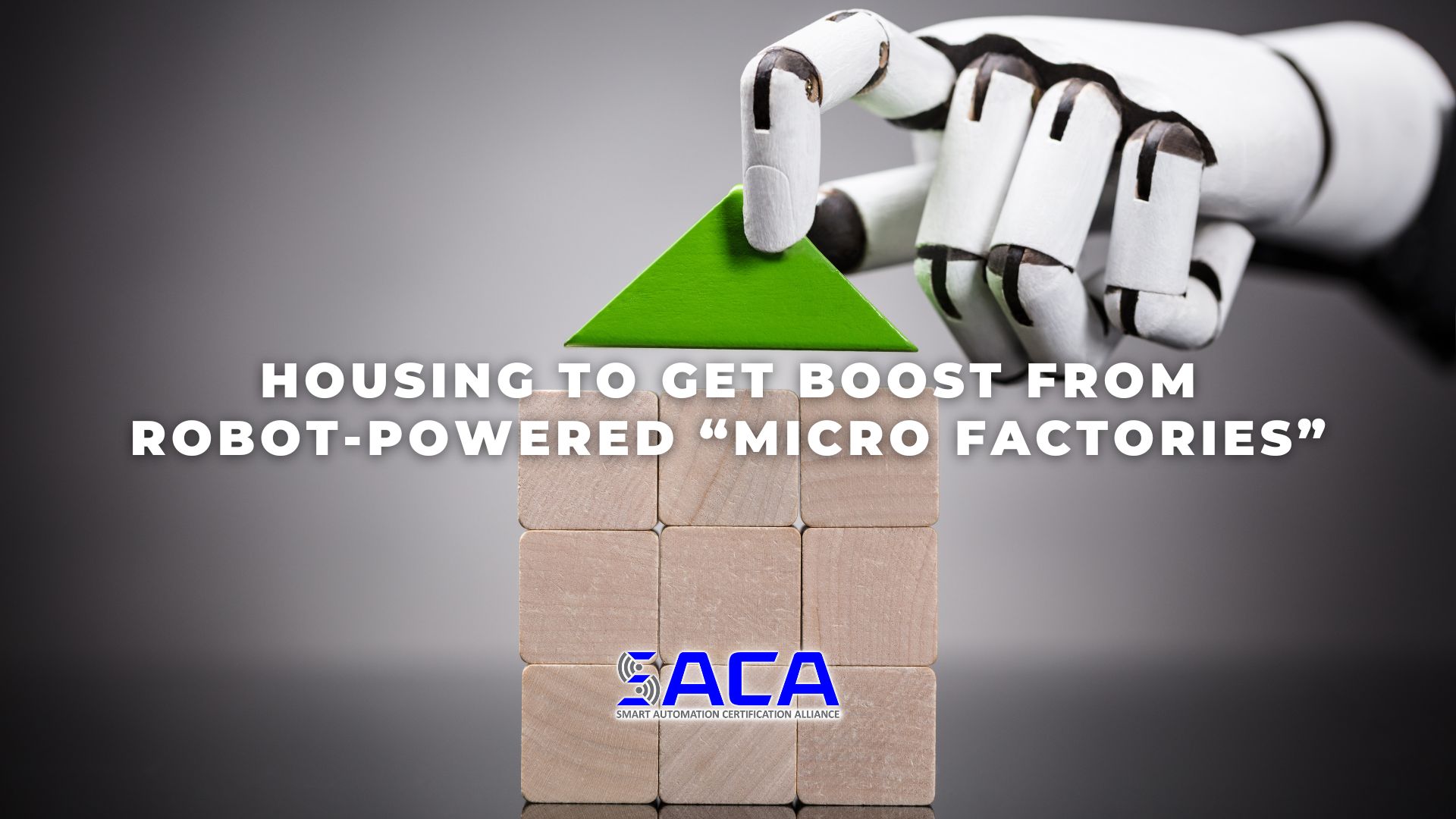
As 2022 begins, leaders of manufacturing companies across the country and around the globe are looking for solutions to a wide variety of challenges. Between the ongoing COVID-19 pandemic, supply chain disruptions, and a critical shortage of highly-skilled workers, manufacturers have their work cut out for them.
Increasingly, manufacturers are turning to advanced automation technologies to solve the problems they face. Adding these technologies can allow manufacturers to optimize processes to meet production deadlines more effectively and efficiently.
When many people hear the phrase “advanced automation technologies,” they often immediately think of robots. Industrial robots certainly do play an important role in many modern manufacturing facilities. However, some companies cannot afford large-scale implementation of expensive robots. Moreover, current workers worry that their jobs will be replaced by machines, leaving them unemployed and searching for new opportunities.
The rise of a new advanced automation technology — the collaborative robot or “cobot” — may offer manufacturers of all sizes new opportunities to automate processes while not only keeping their current employees, but also making their work lives better and more satisfying. In this article, we’ll take a closer look at cobots, their advantages over traditional industrial robots, and their potential applications in manufacturing facilities.
What are Cobots?
Traditional industrial robots tend to be large machines tasked with dangerous, repetitive jobs. Their size and movements present a potential source of danger to employees, so they’re usually cordoned off from employees for safety purposes.
Collaborative robots — also known as cobots — represent a new generation of machine designed to work safely alongside humans in the manufacturing environment. Rather than being cordoned off like traditional robots, cobots tend to be smaller so they can share space with human workers, a significant benefit in facilities with limited space.
Advanced safety features allow cobots to work effectively in close proximity to human workers. While cobots take over repetitive tasks, their human counterparts are freed up to focus on more complex tasks that involve troubleshooting or problem solving.
In fact, far from replacing human workers, cobots often rely on them to lead by example. In a Tech Briefs article, author Megan R. Nichols notes:
“Instead of relying on a programmer to tell them what to do, cobots are often taught by example. An operator physically controls the bot’s movements, running it through its necessary tasks. The cobot can then remember which tasks it needs to complete and perform them again and again with perfect recall and execution.”
How are Cobots Different from Traditional Industrial Robots?
Cobots are growing in popularity throughout the manufacturing sector. In an Interesting Engineering article, author Susan Fourtané reports that experts are forecasting annual global revenues of cobots to be between $7.6 billion and $9.2 billion within the next three to five years.
Why are cobots growing in popularity so rapidly? The answer lies in some of the unique benefits they provide that separate them from traditional industrial robots. According to Fourtané:
“Many believe human and machine collaboration plays a paramount role in the development of Industry 4.0 and the Industrial Internet of Things (IIoT)…The characteristics of collaborative industrial robots suit the demands of Industry 4.0 and the global megatrends better than those of traditional industrial robots. In other words, cobots are better equipped to join humans in Industry 4.0 — also called the Fourth Industrial Revolution — than traditional industrial robots.”
Here are a few of the key differences between cobots and traditional industrial robots:
Flexibility
Traditional industrial robots tend to be large, powerful machines that require a fixed installation dedicated to a single task. Cobots, on the other hand, are usually smaller, allowing for easy relocation and efficient task changes.
According to a Techman Robot Inc. blog post, “Some cobots are even made to be mobile, so you can easily transfer them to help out another station. They operate much more straightforward than their industrial counterparts, which need extensive changes done to their software and hardware to be repurposed.”
Versatility
Not only are cobots more compact and slower than traditional industrial robots, they’re also easier to use for a variety of tasks. For example, the Techman Robot Inc. blog post notes:
“Cobots are designed to take on different kinds of tasks. As long as you have the suitable end effectors, you can program packing bots to take on labeling or inspecting jobs in just a few minutes.”
Ease of Setup
Whereas a traditional industrial robot can take months to install and usually requires an expert to program, cobots often require little to no programming experience to set up. Even the most modest manufacturing facilities can implement cobots and train workers to use them in a matter of weeks.
Cobots feature the added benefit of empowering their human counterparts. Not only do cobots take over manual, repetitive tasks that would otherwise put humans at risk of injuries, such as carpal tunnel syndrome and back pain, but they also allow human workers to dedicate their time to more creative, fulfilling tasks, thereby improving job satisfaction and worker morale.
Cost
Given their smaller size and ease of use, it should come as no surprise that cobots are less expensive than traditional industrial robots. A lower price tag combined with their ease of setup, versatility, and flexibility makes cobots an attractive option for adding advanced automation capabilities to any size manufacturing facility.
As Nichols concludes in her article:
“Cobots may never fully replace traditional robots for large-scale manufacturing projects that require speed and power. The robots, however, will be the perfect tools to take over the repetitive entry-level tasks that are a part of many industries. If you design a robot that can handle these tasks, your skilled workers can spend their energy on other, more crucial tasks.”
What Applications do Cobots have in Manufacturing?
The unique benefits of cobots that set them apart from traditional industrial robots make them an attractive option for many different types of manufacturing facilities. But are they good for all applications? In this section, we’ll take a closer look at the manufacturing applications particularly suited to cobots.
In a Forbes article, author Naveen Joshi notes that cobots are “[o]ne of the most extensively used types of automation machines” and that, “[a]s the underlying technologies mature, collaborative robots in manufacturing can be made more versatile to take up more creative tasks.” The article highlights five key applications of cobots in manufacturing:
Picking, Packing, & Palletizing
Cobots equipped with cameras can accurately and efficiently pick, pack, and palletize a wide variety of products. Adding grippers or suction cups allows cobots to create cartons, pack items, and seal boxes, making fulfillment much easier.
Welding
The Techman Robot Inc. blog post notes that “[c]obots are so accurate that companies are using them to handle process tasks like soldering, screwing, and welding. They can perform these tasks day in and day out (and even after hours) without any slow-downs. They make little to no mistakes, too, so you can rest easy knowing your products have consistently good quality.”
Assembly
According to an Association for Advancing Automation article, cobots “are effective at automating [tedious and physically-demanding] tasks, like holding heavy parts, to allow human workers to be more productive with less risk of injury.” They’re also “more flexible than industrial robots. They can be integrated and programmed far quicker and with greater ease. This makes them more profitable in environments where the robot has to conduct various different tasks.”
Material Handling
Cobots come in mobile versions that can carry materials via a specific route. Not only can they handle hazardous materials safely, but they also streamline processes by eliminating the need for human workers to carry heavy boxes or use heavy equipment, such as forklifts.
Inspection/Quality
According to the Techman Robot Inc. blog post, “[c]obots can be equipped with cameras or sensors that inspect parts of a product for any defects. They can also be used to measure specific components to ensure that they’re being sorted into the right stream in the assembly line.”
Contact SACA to Learn More about Smart Automation Certifications
Cobots are just one of the many forms of new advanced, “connected” technologies that characterize what’s commonly known as Industry 4.0. These technologies, as a group, also go by a variety of monikers, including Smart Factory and the Industrial Internet of Things (IIoT).
Today’s workers need more advanced technical and technological skills than ever before. Unfortunately, there aren’t enough workers with these skills to fill the many roles available today, creating what is known throughout industry as the “skills gap.”
How can modern businesses find the workers they need? How will educational institutions teach the skills modern industry needs? These are questions that demand answers, and one promising solution is the development of industry-standard certifications that focus on connected-systems skills. The Smart Automation Certification Alliance (SACA) sits at the forefront of the effort to certify students and workers who demonstrate the required knowledge and hands-on smart automation skills employers so desperately need. To learn more about Industry 4.0 certifications and how SACA can help both educational institutions and industry employers begin the task of bridging the Industry 4.0 skills gap, contact SACA for more information.





